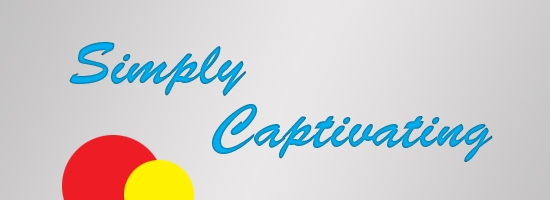Let’s imagine that you want to plant some geraniums on your balcony, and you happen to live across the street from two garden centers. Garden center #1 is lavishly decorated. There are plants and flowers everywhere, and simply to walk into the center is to experience sensory overload. It’s the most beautiful place you can think of to visit, and you like to stop by and simply enjoy the ambience — but you have no idea where you would find a geranium there, although you’re certain that if there was one place on Earth where geraniums could be purchased, this would be the place. Garden center #2 is much more bare bones — it is laid out beautifully but simply, with a stone bench and a fountain in the middle and several specialized areas radiating out from that central point. You only have ten minutes. Which garden center would you go to?
Okay, it was a trick question. Both centers sound beautiful. Personally, I would wait until I had plenty of time, and spend a good couple of hours poking around them both. But you can see my point. Though there are many of us out there who like to poke around the Internet and explore web sites, most people appreciate and return to those web sites they can rely on to help them find information or a product or service quickly, when they have only a few minutes. That’s why so many web designers are turning to a simpler model for their web designs. It’s not just an aesthetic issue — it’s also an ease of use issue.
It’s not simply a matter of having a simple design, though. Web sites seem to work more efficiently for their users if everything is kept simple: thoughts, concepts, words, fonts, colors. It’s partly a matter of branding — and partly a matter of finding your niche. Here are a few basic principles I have found while working with clients who are designing not only web sites, but also the rest of their business marketing materials: brochures, business cards, letterhead, newsletters. For all of the above purposes, the “keep it simple” mantra applies:
- When designing your site, ask yourself what the ONE message is that you want your site to convey. You should be able to summarize your message in a short phrase (preferably a phrase that matches your site’s domain name, making it particularly memorable!). Zen Habits. The Tarot Lady. Knitting Help. Green Life. Sports Writer.

- The logo, theme, and color scheme that is used for one purpose should be carried through to the rest of the business’ marketing materials: web site, newsletter, letterhead, business cards. All should match. That way, customers and clients immediately recognize materials that relate to the business. This seems like an old truism, but it’s one that new business owners often don’t realize. If you are working with a new business owner, take some time to explain this concept. I have found that some people want one look for their web sites and something different for their business cards — and I can’t think of a single instance where that is ever a good idea.

- Just as one shouldn’t change horses in midstream, it’s better not to change your brand frequently. Even if it means taking longer to develop a web site or business cards, it’s worth taking the time to get your brand just right. It should be something simple, recognizable, and timeless — and it should be just right for your niche. If you are not quite sure if your site design is just right, then don’t unveil it yet — take a little longer.
- Choose a font and type size that are clear and readable. The serif versus sans serif debate over font has been raging for years, with no end in sight — choose the one you think is most readable, and, again, stick with it. Don’t change fonts for different sections of your site. (One exception: you may wish to carefully choose your headline font to contrast with your body text font, a device that many designers manage to use effectively.) Likewise, make your typeface large enough to read, but not so large that it takes forever to scroll through the site.
- Keep blog posts simple, organized around one clear theme that can be summarized in a short headline. If you have a complicated topic you’d like to explore, break it up into several blog posts.
Finally, I can’t leave you without offering a few examples. Take a look at the following three web sites, which are very clean and simple in their design (I had nothing to do with designing them — these are just a few web sites that I admire). Enjoy!
- The web site of Kilian Muster (http://www.kilianmuster.com/). This web site is very understated. There are not a lot of colors jumping out at you. One blog post is highlighted per day, but it’s easy to find the others if you feel like it.

- The Morning News. (http://www.themorningnews.org/). This is a nice example of a web site that provides plenty of content right on its home page — but yet the home page manages to look simple instead of busy, thanks to a black and white color scheme, a sans serif font (I guess it’s clear where I fall in the great serif/sans serif font debate!), and good clear organization.

- Simple Bits. (http://simplebits.com/). Blog pages tend to be anything but simple — but this one manages to keep its look calm and elegant. And all with a serif font!

